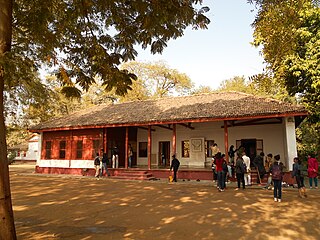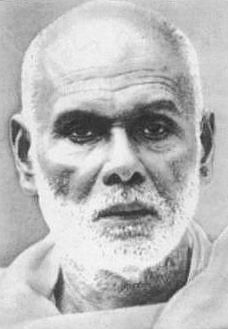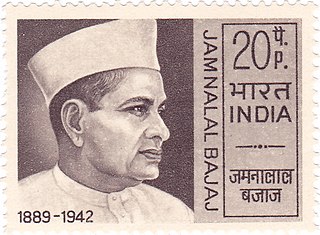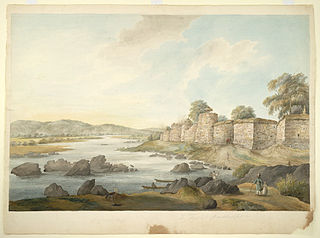Related Research Articles

Odisha, formerly Orissa, is an Indian state located in Eastern India. It is the eighth-largest state by area, and the eleventh-largest by population, with over 41 million inhabitants. The state also has the third-largest population of Scheduled Tribes in India. It neighbours the states of Jharkhand and West Bengal to the north, Chhattisgarh to the west, and Andhra Pradesh to the south. Odisha has a coastline of 485 kilometres (301 mi) along the Bay of Bengal in the Indian Ocean. The region is also known as Utkaḷa and is mentioned by this name in India's national anthem, Jana Gana Mana. The language of Odisha is Odia, which is one of the Classical languages of India.

Jyotirao Govindrao Phule, also known as Jyotiba Phule, was an Indian social activist, businessman, anti-caste social reformer and writer from Maharashtra. His work extended to many fields, including eradication of untouchability and the caste system and for his efforts in educating women and oppressed caste people. He and his wife, Savitribai Phule, were pioneers of women's education in India. Phule started his first school for girls in 1848 in Pune at Tatyasaheb Bhide's residence or Bhidewada. He, along with his followers, formed the Satyashodhak Samaj to attain equal rights for people from lower castes. People from all religions and castes could become a part of this association which worked for the upliftment of the oppressed classes. Phule is regarded as an important figure in the social reform movement in Maharashtra. The honorific Mahātmā, was first applied to him in 1888 at a special program honoring him in Mumbai.

Bargarh is one of the major towns of Western Odisha and a municipality in Bargarh district in the state of Odisha in India. It is the administrative headquarters of Bargarh District and is one of the most important towns of Odisha because it is known as the "rice bowl of Odisha" due to its intense rice production, it is a agroindustrial hub and is also known as "city of handloom" because sambalpuri sari originated from here."Dhanujatra" of Bargarh is world famous and is known as the "world's largest open theatre". Bargarh was awarded with the "fastest moving city" award under the 50k-100k category in Swachh Sarbekhyan 2022 in the east zone.

Sabarmati Ashram is located in the Sabarmati suburb of Ahmedabad, Gujarat, adjoining the Ashram Road, on the banks of the River Sabarmati, 4 miles (6.4 km) from the town hall. This was one of the many residences of Mahatma Gandhi who lived at Sabarmati (Gujarat) and Sevagram when he was not travelling across India or in prison. He lived in Sabarmati or Wardha for a total of twelve years with his wife Kasturba Gandhi and followers, including Vinoba Bhave. The Bhagavad Gita was recited here daily as part of the Ashram schedule.

Dalit is a term first coined by the Indian social reformer Jyotirao Phule for untouchables and outcasts, who represented the lowest stratum of the castes in the Indian subcontinent. Dalits were excluded from the fourfold varna of the caste hierarchy and were seen as forming a fifth varna, also known by the name of Panchama. Several scholars have drawn parallels between Dalits and the Burakumin of Japan, the Baekjeong of Korea and the peasant class of the medieval European feudal system.

Sevagram is a town in the state of Maharashtra, India. It was the place of Mahatma Gandhi's ashram and his residence from 1936 to his death in 1948. After Sabarmati, Sevagram Ashram holds immense importance due to the residence of Mahatma Gandhi.

The Temple Entry Proclamation was issued by Maharaja Chithira Thirunal Balarama Varma on November 12, 1936. The Proclamation abolished the ban on the backward and marginalised communities, from entering Hindu temples in the Princely State of Travancore, now part of Kerala, India.

Jamnalal Kaniram Bajaj was an Indian businessman and politician. He founded the Bajaj Group of companies in the 1920s, and the group now has 24 companies, including six that are listed on the bourses. He was also a close and beloved associate of Mahatma Gandhi, who is known to have often declared that Jamnalal was his fifth son.

Sambalpur is the fourth largest city in the Indian State of Odisha. It is located on the banks of river Mahanadi, with a population of 335,761. Prehistoric settlements have been recorded there. It is the home of the Sambalpuri sari.

Nandanar, also known as Thirunaallaippovaar and Tirunallaipovar Nayanar, was a Nayanar saint, who is venerated in the Hindu sect of Shaivism. He is the only Dalit saint in the Nayanars. He is generally counted as the eighteenth in the list of 63 Nayanars. Like the other Nayanars, he was a devout devotee of the god Shiva.
A padayatra is a journey undertaken by politicians or prominent citizens to interact more closely with different parts of society, educate about issues concerning them, and galvanize his or her supporters. Padayatras or foot pilgrimages are also Hindu religious pilgrimages undertaken towards sacred shrines or pilgrimage sites.

Nuakhai is an agricultural festival mainly observed by people of Western Odisha in India. Nuakhai is observed to welcome the new rice of the season. According to the calendar it is observed on panchami tithi of the lunar fortnight of the month of Bhadrapada or Bhadraba (August–September), the day after the Ganesh Chaturthi festival. This is the most important social festival of Western Odisha and Chhattishgarh also adjoining areas of Simdega in Jharkhand, where the culture of Western Odisha is much predominant.

Elanthoor is a village in Pathanamthitta district of the Southern State of Kerala, India. Situated halfway between Kozhencherry and Pathnamthitta, the area was part of the Kingdom of Travancore presumably since 1820. This peaceful rural belt has a significant place in the history of the freedom movement of the country and has made notable contributions to the film industry. It has been argued that the expression "Ellangalude Oor" shortened by over has become "Elanthoor". "Ellangalude Oor" would mean "aggravation of settlements" or a region of concentration of houses.

The Leaning Temple of Huma in India is one of only a very few leaning temples in the world. It is located in Huma, a village situated on the bank of the Mahanadi, 23 km south of Sambalpur in the Indian state of Odisha. The temple is dedicated to the Hindu god Lord Bimaleshwar.

Parbati Giri, daughter of Dhananjay Giri. Nicknamed the Mother Teresa of Western Odisha, was a prominent female freedom fighter from Odisha, India. The women freedom fighters of Odisha played a significant role in the Indian Freedom Struggle.

Gandhi Memorial Museum, established in 1959, is a memorial museum for Mahatma Gandhi located in the city of Madurai in Tamil Nadu, India. Known as Gandhi Museum, it is now one of the five Gandhi Sanghralayas in the country. It includes a part of the blood-stained garment worn by Gandhi when he was assassinated by Nathuram Godse.

Binod Kanungo (1912–1990) was an Odia author, freedom fighter, Gandhian, educator, social reformer and compiler of the Gyana Mandala, which is the greatest encyclopaedia in the Odia language. He also won the Odisha Sahitya Akademi Award for his travelogue Runa Parishodha (1983). He was also a veteran freedom fighter and notable educationist. He was awarded with India's fourth highest civilian honour "Padmashree". He died on 22 June 1990.
Harijan Sevak Sangh is a non-profit organisation founded by Mahatma Gandhi in 1932 to eradicate untouchability in India, working for Harijan or Dalit people and upliftment of Depressed Class of India. It is headquartered at Kingsway Camp in Delhi, with branches in 26 states across India.
Sisua is a medium-sized village in the Salipur taluk/mandal/tehsil/block of Cuttack district in the state of Odisha, India, close to the new Sisua Village Jagannath Temple. The village lies South of Cuttack to Kendraparda road left of Sisua village road if traveling South. As of 2009 Kantapara is the gram panchayat of Sisua village

Gopabandhu Choudhuri was an Indian activist, social worker and freedom fighter. He participated in the Non-cooperation Movement, Civil Disobedience movement.
References
- ↑ "7 new sites to get tourist spots recognition in S'pur". www.dailypioneer.com. The Pioneer. Archived from the original on 1 October 2020. Retrieved 1 October 2020.
- ↑ "Mahatma Gandhi, Chinese Kali, and a Sachin Tendulkar temple: 10 unusual temples in India for the unconventional Indian gods". www.news18.com. News18. 2 September 2014. Archived from the original on 1 October 2020. Retrieved 1 October 2020.
- ↑ "Dalits build Gandhi temple in Sambalpur". The Times of India. 3 October 2007. Archived from the original on 7 October 2016. Retrieved 1 October 2020.
- ↑ Subrat Mohanty. "Ramdhun to recall Bapu". www.telegraphindia.com. The Telegraph. Archived from the original on 1 October 2020. Retrieved 1 October 2020.
- ↑ "Mahatma Gandhi Temple in Bhatra, Sambalpur". www.mysambalpur.in. 3 October 2012. Archived from the original on 1 October 2020. Retrieved 1 October 2020.